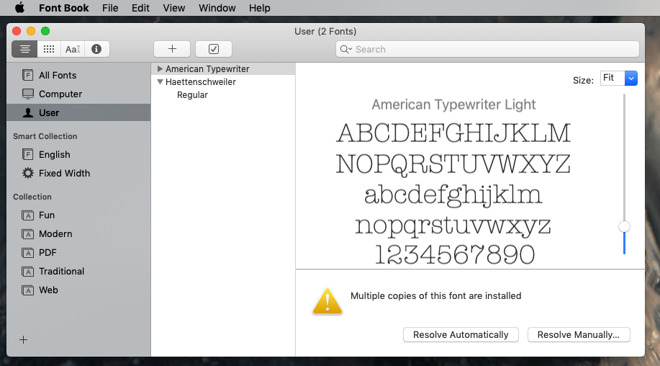

And certainly nothing with super thin or light lines. And if they can’t be read, you certainly can’t expect conversions, now can you? Quality #2: ClarityĬlean, crisp fonts with precise lines are what’s going to work best in your email copy. If your font isn’t legible, no one will be able to read your emails. We’ve already mentioned this quality but it bears repeating because it’s the most important by far. But how does knowing the type of font Coca-Cola uses translate into picking the right font for your email newsletters?Īny font you pick to use in your company emails needs to include the following 4 qualities: Quality #1: Readability And you know that different font types create different emotions in your customers. You now know the five basic types of fonts that are available (other than symbols, I suppose).
How to email a font from a mac how to#
Email Typography: How to Choose the Best Fonts With this information in mind, we can now move onto how you can select the best font for emails. Disney offers one of the most well-known logos in the world, and it features a display font: Disney For logos (and possibly headers), display fonts can make a real impact and stand out. Words and feelings commonly associated with display fonts include a sense of individuality or uniqueness, friendliness, or expressiveness. Coca-Cola is a timeless example of a script font used well: Coca-Cola Display FontsĮxamples include Cooper and Valencia. However, they do make an impact when used in logos and that could work for graphical elements. Script fonts will likely not be a wise choice for use in your emails. Hulu’s logo is a popular example of one using a modern font: Hulu Script FontsĮxamples include Edwardian Script and Bickham Script. Modern fonts can appear stylish, chic, or give an overall sense of strength. Netflix features a sans serif font: Netflix Modern FontsĮxamples include Futura and Century Gothic. Sans serif fonts are very corporate-looking. These fonts give off the impression of reliability and stability. Sans serif fonts give off a modern look that’s clean, simple, and straightforward. Tiffany & CoĮxamples include Helvetica, Calibri, and Franklin Gothic. The Tiffany & Co logo serves as a solid example. Older brands (or those that want to appear as though they’ve been around for decades) make solid use of these sorts of fonts to instill confidence. Serif fonts exude a sense of respectability, reliability, and tradition. According to Crazy Egg, the five main font types elicit different emotions or associations: Serif FontsĮxamples include Times New Roman, Baskerville, and Georgia. Certain types of fonts have certain “feelings” associated with them. This applies to logos mostly but it would pay to keep this information in mind as you’re selecting email fonts as well. There’s a psychology to your font choices as well. This small change reduced bounce rate by 10% and increased the conversion rate by a whopping 133%! All because of bumping up the font size two points! The 13pt version of the font performed so much better because the content was now easier on the eyes and more readable. More space was added between the lines of text as well.

The research involved increasing a block of text set to Arial font from 10pt to 13pt. In fact, according to research conducted by Click Laboratory, slightly increasing a font’s size can have a huge impact on your conversion rate. The size of the font you choose matters, too. It’s not just the font you choose that has an impact on conversions, however. And if people are only spending 11 seconds on an email, that’s a ton of time wasted. In fact, people take twice as long to read fancy fonts. Often, this means relying on standard fonts that everyone is familiar with already. They need to offer that “at-a-glance” convenience. That means any fonts you choose need to be readable and scannable. Most people spend only 11 seconds on email. 😬 🗑 Learn more about email-safe fonts and why you need them ⬇️ Click to Tweet How Good Fonts Boost Conversions How you present your emails can make the difference between your audience reading them.and sending them straight to the trash. But first, let’s briefly discuss how good font choices can actually make a huge impact on your conversion rate. That’s why it’s highly recommended you stick to email-safe fonts only when creating email marketing content. In fact, if a font isn’t supported, an email client may end up using a fallback font which could mess up your intended tone at best or obscure the legibility of your content at worst. However, special fonts won’t always display correctly in all email clients. And you want to make your content stand out. After all, you want to make a positive impression. It’s tempting to use fancy fonts for your emails.


 0 kommentar(er)
0 kommentar(er)
